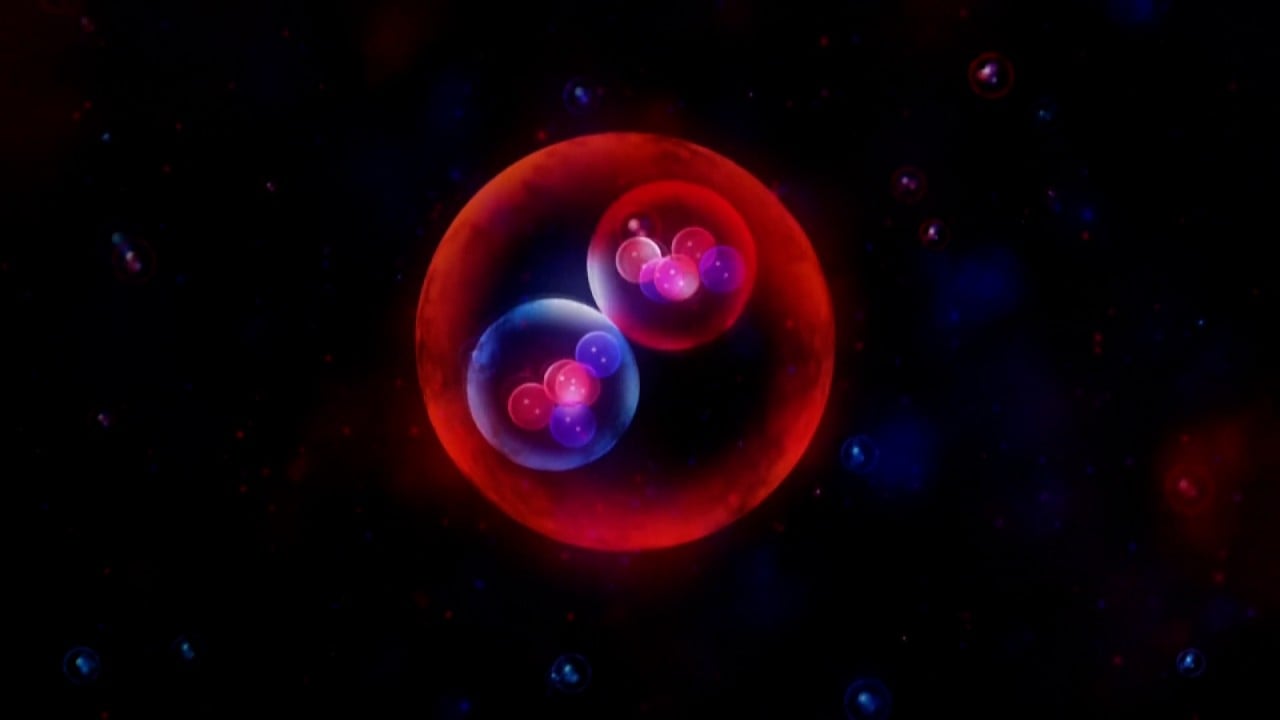
How do solar flares form? A Chinese team fires up lasers in a lab to find out
- Scientists recreate the way the sun’s magnetic fields collide and realign to send charged particles into space
- The work in the lab mimics powerful, puzzling processes previously seen by telescopes
The team simulated a chaotic phenomenon known as turbulent magnetic reconnection in which the sun’s magnetic fields dramatically collide, break, and realign, unleashing an enormous amount of radiation into space.
The results were published in the peer-reviewed international journal Nature Physics on Monday.
“We reproduced the rather chaotic and complex reconnection process in the laboratory, and demonstrated typical changes during solar flares which had been observed by telescope missions,” Beijing Normal University astronomy professor Zhong Jiayong, the study’s lead author, said.
“Compared with telescope observation, laboratory simulation is often more controllable and time-saving. It allows scientists to build more reliable models and better predict when and where magnetic reconnection is going to happen.”
In this process, two oppositely oriented magnetic fields in plasma meet, tangle, cross, and reconnect, creating plasma kinetic and thermal energy and sending charged particles hurtling into space at the speed of light.
Those particles form solar flares that can reach Earth, hammering infrastructure such as satellites.
At least three X-class solar flares – the most powerful on the scale – have erupted this month, according to the US National Oceanic and Atmospheric Administration.
In February last year, US company SpaceX lost 40 of its newly launched Starlink communications satellites due to a geomagnetic storm triggered by a solar flare.
The work by Zhong and his team comes more than a decade after he and colleagues from the Chinese Academy of Sciences, Peking University, and Shanghai Jiao Tong University carried out a similar but scaled-down version of the experiment.
In 2010, they recreated magnetic reconnection by using two high-power lasers to excite an aluminium foil and generate plasma bubbles. As the plasma bubbles expanded, doughnut-shaped magnetic fields collided with each other and magnetic reconnection was observed.
However, the experiment only mimicked a simple version of magnetic reconnection in a small and steady interaction area, while the actual scenario on the sun was much more complex, Zhong said.
“In that experiment, we properly scaled key parameters to make sure it is compatible with an actual solar flare on the sun,” Zhong said.
For the new study, Zhong and his team doubled the number of lasers and amount of aluminium foil to create a larger interaction area for the turbulence.
“Though turbulence is everywhere in our daily life, from a fast flowing river to the smoke from a chimney, it remains a highly complicated subject,” he said.
“Turbulence research used to be confined to a small community and focused only on the theoretical aspects, and I’m glad to see experimental studies of turbulence are now taking off.”
The experiment also allowed the researchers to measure how energetic the electrons in the plasma were and how they accelerated, something the US’ Parker Solar Probe will be able to do when it closes in on the sun.
Both of the Chinese experiments were conducted at ShenGuang II laser facility in Shanghai, which consists of an eight-beam laser system and a multifunctional high-energy laser system.
The facility can shoot laser beams with a power more than the total output of global power grids within one-billionth of a second and form a high-temperature plasma for various laser-plasma interaction experiments.



